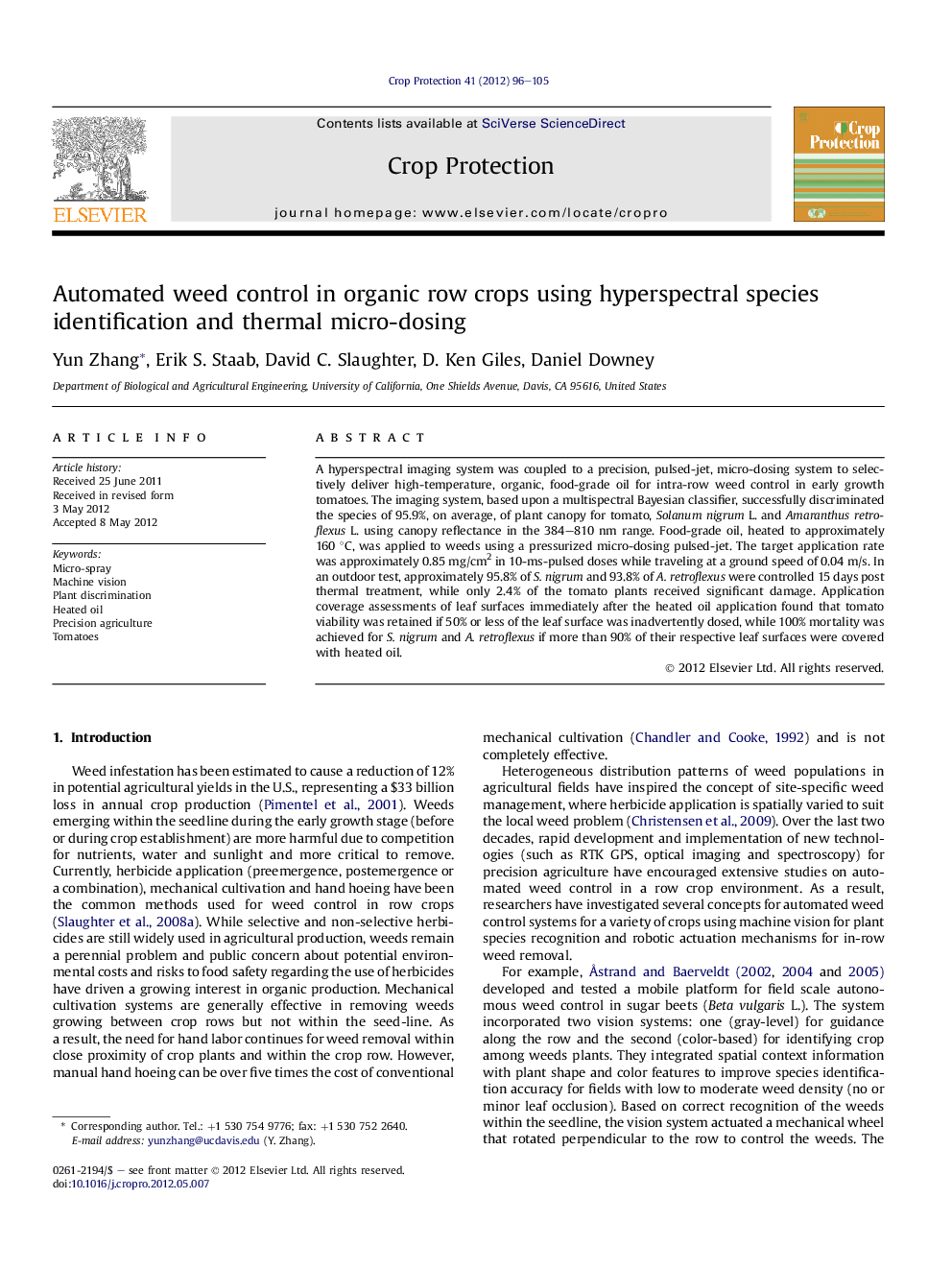| Article ID | Journal | Published Year | Pages | File Type |
|---|---|---|---|---|
| 4506220 | Crop Protection | 2012 | 10 Pages |
A hyperspectral imaging system was coupled to a precision, pulsed-jet, micro-dosing system to selectively deliver high-temperature, organic, food-grade oil for intra-row weed control in early growth tomatoes. The imaging system, based upon a multispectral Bayesian classifier, successfully discriminated the species of 95.9%, on average, of plant canopy for tomato, Solanum nigrum L. and Amaranthus retroflexus L. using canopy reflectance in the 384–810 nm range. Food-grade oil, heated to approximately 160 °C, was applied to weeds using a pressurized micro-dosing pulsed-jet. The target application rate was approximately 0.85 mg/cm2 in 10-ms-pulsed doses while traveling at a ground speed of 0.04 m/s. In an outdoor test, approximately 95.8% of S. nigrum and 93.8% of A. retroflexus were controlled 15 days post thermal treatment, while only 2.4% of the tomato plants received significant damage. Application coverage assessments of leaf surfaces immediately after the heated oil application found that tomato viability was retained if 50% or less of the leaf surface was inadvertently dosed, while 100% mortality was achieved for S. nigrum and A. retroflexus if more than 90% of their respective leaf surfaces were covered with heated oil.
► Hyperspectral imaging coupled to thermal micro-dosing for automated weed control. ► System identified 96% of plant canopy for tomato, black nightshade and pigweed. ► Pressurized micro-dosing of 160°C canola oil precisely applied to targeted weeds. ► System controlled 96% of black nightshade and 94% of pigweed in an outdoor test.
